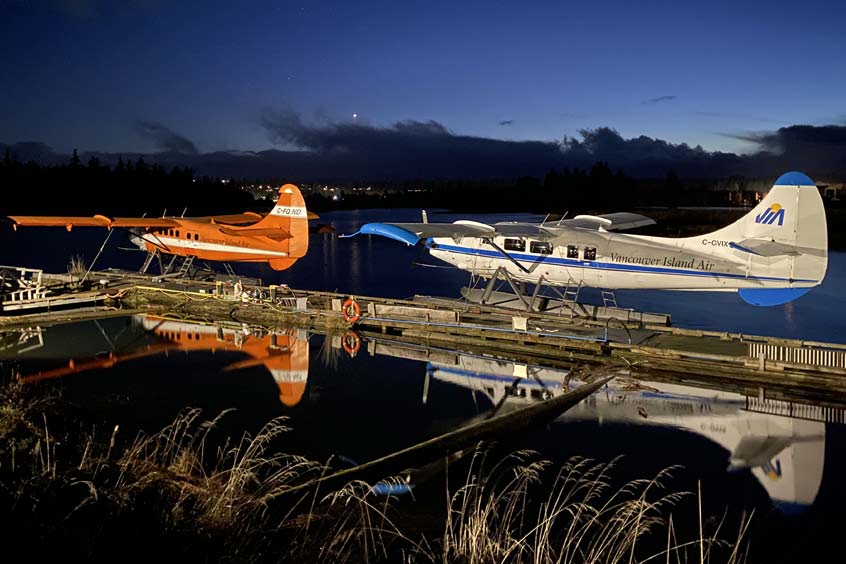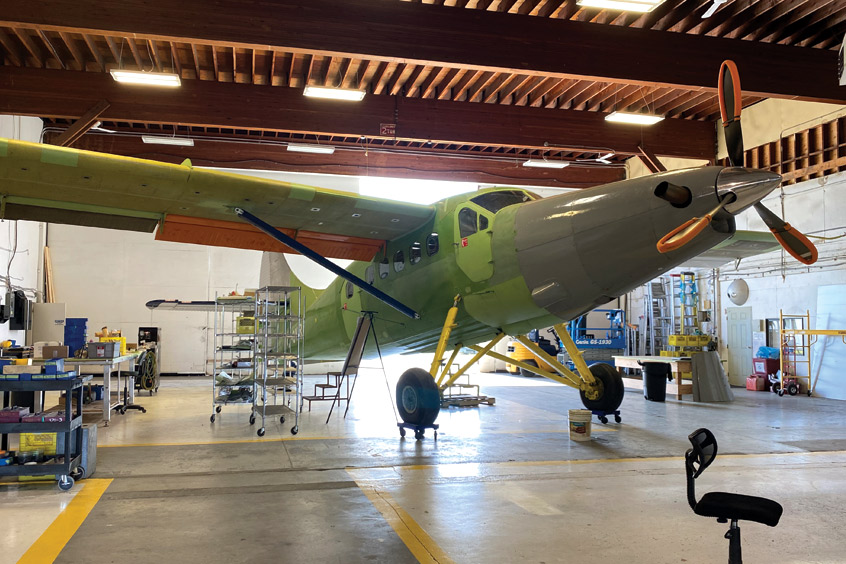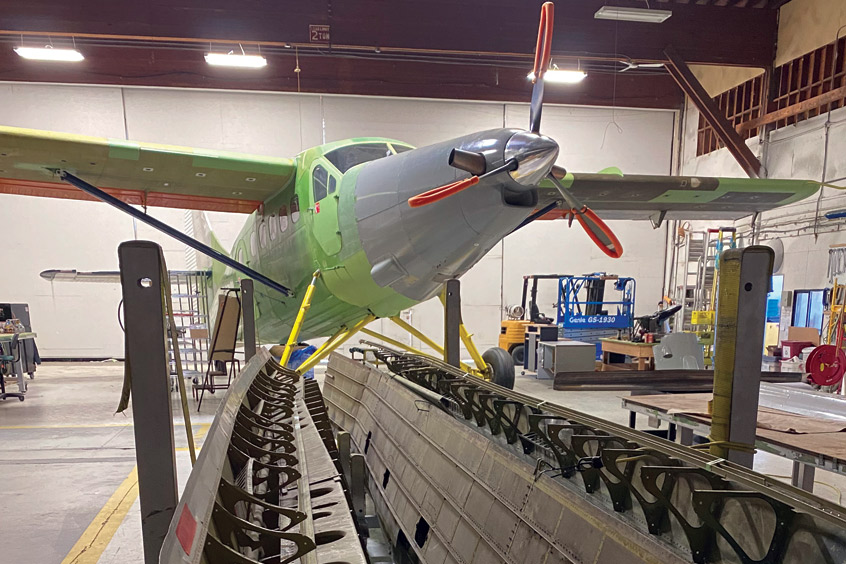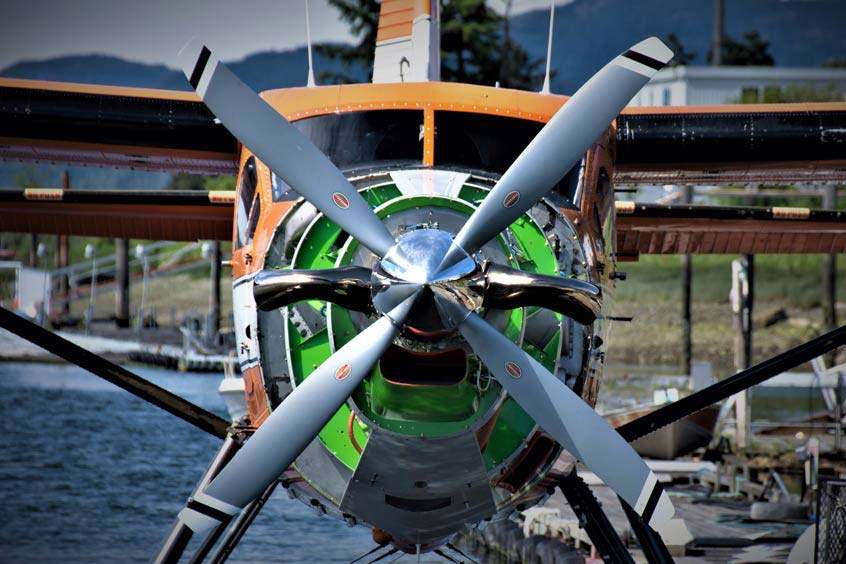ACE 2026 - The home of global charter.
 The bimonthly news publication for aviation professionals.
The bimonthly news publication for aviation professionals.





Vancouver Island Air, an airline, manufacturer and AMO operating 1950s and 60s de Havilland Otters, has recently moved into a new hangar located at the historic Tyee Spit on the Campbell River in British Columbia.
“Our new hangar is right next door to our float plane base,” says sales/procurement/marketing/mechanic Marlena Niforos. “We lucked out and the previous owner sold it to us. Airline operations are still run out of that building, the hangar is offices, maintenance and manufacturing.”
The company services local industrial operations and native communities, and provides safe passenger travel and supplies up and down the coast. As a floatplane operation that runs year round, pilot, founder and operations manager Larry Langford and head of maintenance and parts development/manufacturing Josi Billinghurst, who are co-owners, know what fellow operators need to keep their fleets running strong; parts and STCs that will keep an older aircraft like the Otter running cheaper, faster and better than before.
“We have pursued multiple projects to ease the needs of our fleet and our customers’ planes as well,” says Niforos. “Our motto is that we're here for the operator, and nobody should have to go broke keeping their airplane safe.”
The company has added a third aircraft to its fleet, a 1955 DHC-3 that it found in 2017 through a parts company in the US. It was a Vietnam-era wrecked fuselage that Vancouver Island Air completely overhauled in-house and finished in 2021. When it received its certificate of airworthiness the airframe was granted a zero-time designation since overhaul, the first Otter in recent history to receive this designation. The company is now getting it perfected and ready for fleet operations for travel to lodges for tourism, indigenous communities and industrial work sites in the area. “We manufactured the new parts and developed a maintenance recipe that helped make this zero-time designation possible for our company,” explains Niforos.
The company’s manufacturing subsidiary AeroTech Industries has been working toward tackling airworthiness directives that affect the Otter and has become a parts provider. “We are on a mission to make parts of superior quality at a reasonable price,” says Niforos. “For example, many cast fittings that are in danger of fatigue cracking and embrittlement are replaced with higher quality machined parts that vastly improve the safety of the aircraft. Our current mission is providing wing lugs and tie bars for the FAA AD (airworthiness directive) expected to hit later in 2022. We've already accomplished this for the AD that hit Canada a few years ago.”
It has submitted approval for its PT6A-140A engine LSTC for the Otter on floats through Transport Canada, and once received, will seek FAA approval immediately afterwards. “We have actively started reducing our carbon emissions by upgrading our engine, for which the limited supplemental design certificate is currently run on our fleet, but our goal is to share these advancements with other operations,” she continues. “The -140 engine goes faster and burns less fuel. It is quite an upgrade from the original R1340 engine and has the horsepower needed to accomplish our airline needs.” This will be the highest horsepower P&W engine on the market for the DHC-3 Otter.
The company is branching out into other aircraft makes and models, starting with Cessna Caravans running PT6 engines with a better propeller designed through Hartzell. “The Hartzell model propeller, HC-E4N-3KAY, works wonders for the performance on the Otter and so far we have tested it on one Caravan,” Niforos adds. “The results so far are positive and we expect to continue flight testing into summer 2022.” The next move may be the purchase of a DHC-2 Beaver.